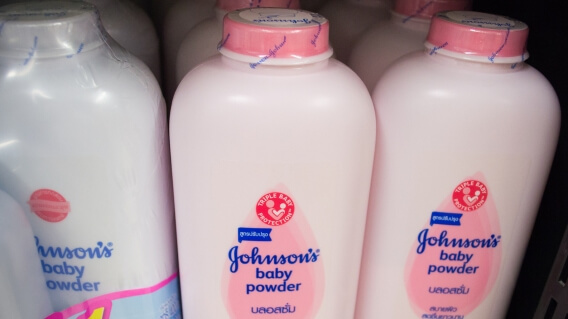Court Rejects Johnson & Johnson’s Bankruptcy Plan for Talc Lawsuits
Legislation & LitigationWritten by Michelle Whitmer | Edited by Walter Pacheco

A federal appeals court last week rejected an LTL Management bankruptcy filing, delivering a blow to the company’s plan to resolve thousands of talc lawsuits. The company is a Johnson & Johnson subsidiary.
The ruling effectively found the company’s bankruptcy was not filed in good faith. J&J said on Feb. 6 that it plans to appeal the U.S. Court of Appeals for the Third Circuit’s ruling.
“LTL initiated this process in good faith and our objective has always been to equitably resolve claims related to the company’s cosmetic talc litigation,” J&J wrote.
If denied on appeal, Johnson & Johnson will face more than 38,000 ovarian cancer talc lawsuits and more than 400 mesothelioma claims in the civil court system. It could take a couple of months for that process to begin, said attorney Lisa Busch, managing attorney of the asbestos bankruptcy department at Weitz & Luxenberg.
“There isn’t specifically a date certain yet. We hope in the next 30 to 60 days that we can get back to business as usual,” Busch told Asbestos.com.
The lawsuits claim Johnson & Johnson’s asbestos-contaminated talcum powder products caused mesothelioma and ovarian cancer.
J&J Bankruptcy Strategy Backfires
The appeals court ruled that only companies in financial distress may file for bankruptcy. Johnson & Johnson, valued at more than $400 billion, said its subsidiary filed for bankruptcy in good faith.
“What counts to access the Bankruptcy Code’s safe harbor is to meet its intended purposes,” Judge Thomas Ambro wrote in his opinion. “Only a putative debtor in financial distress can do so. LTL was not. Thus we dismiss its petition.”
Ambro’s ruling has created challenges for J&J’s restructuring strategy, which is known as the Texas Two-Step. The company formed LTL Management in 2021 to hold its asbestos-contaminated talc liabilities, but transferred few of its assets. Three days later, LTL filed for bankruptcy. The bankruptcy plan involved creating a trust fund to handle current and future talc lawsuits.
An attorney representing J&J said last year that a funding agreement could contribute as much as $61.5 billion to the trust. The company initially pledged $2 billion when it created LTL. The court found this funding agreement proved LTL was not in financial distress.
“LTL has a funding backstop, not unlike an ATM disguised as a contract, that it can draw on to pay its liabilities,” wrote Ambro.
Johnson & Johnson Faced Challenges at 2019 Hearing
Plaintiffs’ attorneys and the U.S. Department of Justice presented challenges to J&J’s Texas Two-Step at a hearing in September 2022. Attorneys representing the plaintiffs suing J&J targeted the company’s legal strategy.
They said that during the LTL bankruptcy process, J&J paid out billions of dollars to shareholders and for stock buybacks, which bankrupt companies are not allowed to do. The Texas Two-Step differs significantly from other bankruptcy cases involving asbestos liabilities.
“In all the asbestos bankruptcies before the Texas Two-Step happened, the entire company filed for bankruptcy,” said Busch. She added, “If you can show that your potential future liabilities outweigh your potential profits, you can get 534(g) protection.”
Section 534(g) of the Bankruptcy Code was created specifically so companies with big asbestos liabilities could file for bankruptcy and channel lawsuits into a trust fund. The U.S. Department of Justice got involved because it had concerns that other nonbankrupt companies and wealthy individuals would use the Texas Two-Step to avoid liability.
“If Johnson & Johnson can get away with this bankruptcy, what’s to stop any other company in America from doing the same thing?” asked Sean Janda, a lawyer representing a division of DOJ that oversees the administration of bankruptcy cases.
Asbestos-Contaminated Talc Issue Dates Back Decades
Unsealed court documents have revealed Johnson & Johnson knew about asbestos in its baby powder as early as the 1950s. In 1956, J&J asked Battelle Memorial Institute, a research laboratory, to analyze large deposits of talc from Italy. When J&J turned this talc into powder, it found abrasive material and wanted to know what it was.
The laboratory reported contaminates in the talc that included tremolite asbestos. Johnson & Johnson proceeded to buy numerous talc mines in search of a clean source.
In 1969, an internal company memo written by a J&J executive acknowledged that tremolite was commonly found in talc deposits and virtually impossible to eliminate. Johnson & Johnson failed to alert consumers or the U.S. Food and Drug Administration.
In 2018, the FDA found asbestos in a bottle of Johnson’s Baby Powder and a recall was issued. The company announced in August 2022 that it would stop talc-based baby powder sales worldwide by the end of this year. J&J is replacing the talc with cornstarch.







